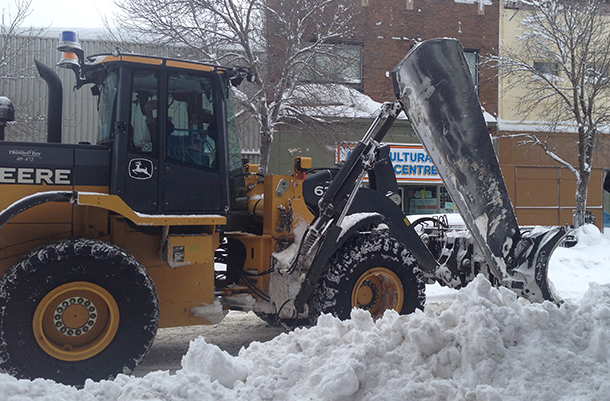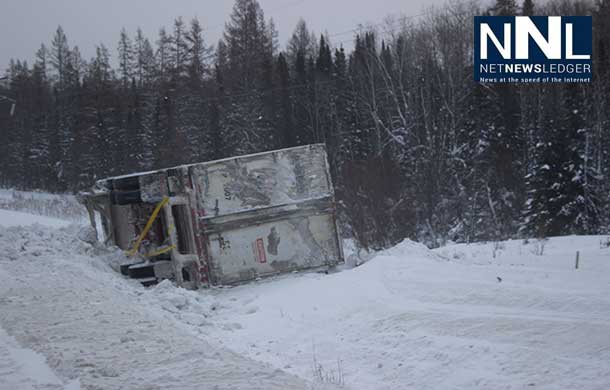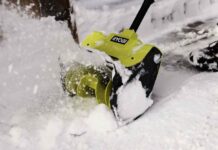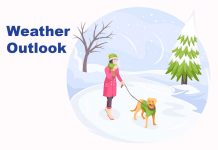
THUNDER BAY – NEWS – With the arrival of the first snowfalls of winter, highways and roadways around Thunder Bay and across Northwestern Ontario can turn from safe dry routes to slippery and dangerous in a very short period of time.
Keeping yourself, your family and your vehicle safe during winter means taking the time to plan your trips, and taking the time to prepare not only yourself as the driver but preparing your vehicle for winter.
The Canada Safety Council shares these tips for National Safe Driving Week in Canada:
Winter’s coming quickly, and with it comes the usual chores of shovelling the driveway, scraping ice off the windshield and bundling up before leaving the house. But before the time comes to deal with the challenges the colder weather presents, make sure your vehicle is ready for the season.
December 1 to 7 is National Safe Driving Week, and the Canada Safety Council is reminding Canadians to winter-proof their vehicles to make any driving they may do become easier, safer and more reliable.
One of the most beneficial preventative measures you can take is to install winter tires on your car. Get four tires that are suitable for your vehicle, paying special attention to the mountain/snowflake symbol on the side to indicate that they conform to winter tire standards. Don’t wait for the first snowfall to make the change, either — winter tires should be installed when the ambient temperature drops below 7C. This is when the rubber in all-season tires hardens and starts losing the grip it offers.
Keep in mind that on the days that roads are the snowiest, that is when the tire shops and garages are often the busiest.

According to the Tire and Rubber Association of Canada’s Winter Tire Report, only half of Canadian motorists outside Quebec — where winter tire use is mandatory according to provincial law — use winter tires, with 63 per cent of people surveyed incorrectly believing that all-season tires offer adequate braking power and traction for Canadian winters.
However, the survey showed the biggest detractor for switching to winter tires was the cost. But, in addition to government incentives, some insurance companies also offer discounts to drivers who use winter tires. In Quebec, where the tires have been mandatory since 2008, crashes have decreased significantly; a study done for the province’s transportation ministers showed an 18 per cent drop. Don’t put a price on peace of mind — winter tires can save lives.
In addition to the installation of winter tires, basic maintenance of your vehicle is also of critical importance before the winter months are in full swing. Be sure to take action on the following items:
- Make sure lights are all working properly. Replace any headlights, brake lights or other lights on your vehicle if they’re not in working condition. Especially in the winter, it’s important to see and be seen.
- Ensure you have a fully-charged battery. In cold weather, a depleted battery might not be enough to start your vehicle. Have your battery tested before cold weather hits, and be proactive in changing it for a new one before the old battery fails.
- Know you’ll be able to stop safely. Winter tires are an important part of gaining traction when stopping, but you should also check that your brakes are working well. If they are squeaking, creaking, feel odd or seem to pull, get them serviced.
- Windshield wipers and washer fluid should be working right. Replace any windshield wipers that are streaky, as any accumulation of snow or ice could make visibility much poorer. Also, fill up on winter windshield washer fluid (-35C or -40C) and keep a second jug in your vehicle at all times in case of emergency.
- Keep a brush and scraper in your vehicle. You never know when you might need to brush snow or scrape ice off your car. Be prepared for these eventualities and they won’t catch you by surprise. Consider keeping a flashlight, too, as the extra light may prove useful on dark winter nights.
The Canada Safety Council has a limited number of ice scrapers available for free to interested motorists. Please email us at csc@safety-council.org for more information.
Getting your vehicle ready for winter weather is important. For highway trips, especially in Northwestern Ontario, and in particular for travellers on the Northern Winter Roads, you should take extra time to prepare for your journeys. Having extra clothing, sleeping bags, a small stove or even a bag of candles, along with a sturdy shovel is key.
Driving in the winter always poses a new set of challenges to even the most experienced of drivers. Ensure that you’re well prepared to face the elements, leave yourself plenty of time and space to get stopped if necessary and, if possible, avoid driving in poor visibility bad weather conditions entirely.






